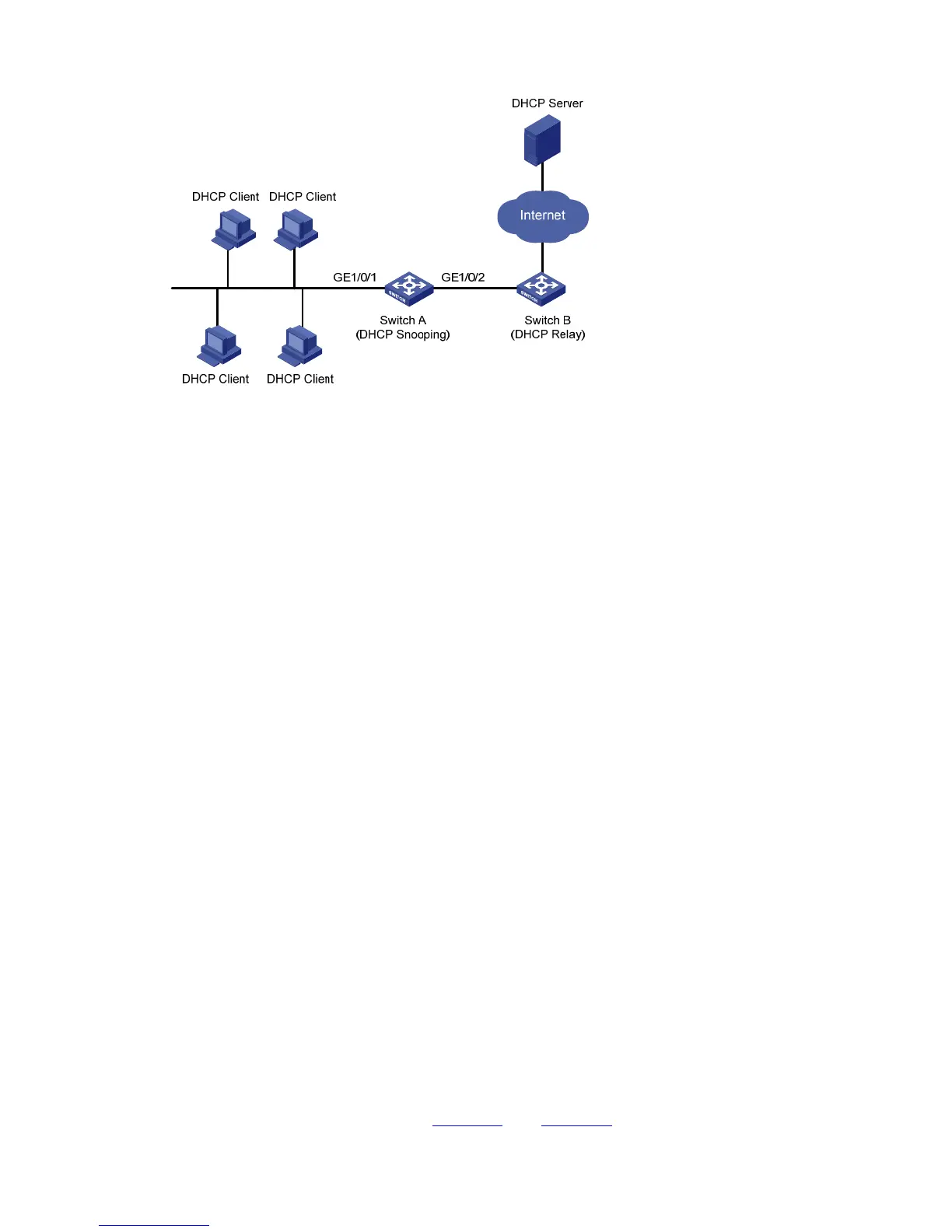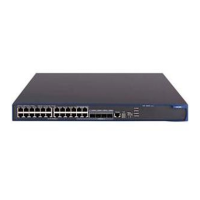3-2
Figure 3-1 Typical network diagram for DHCP snooping application
DHCP snooping listens the following two types of packets to retrieve the IP addresses the DHCP clients
obtain from DHCP servers and the MAC addresses of the DHCP clients:
z DHCP-REQUEST packet
z DHCP-ACK packet
Introduction to DHCP-Snooping Option 82
Introduction to Option 82
Option 82 is the relay agent information option in the DHCP message. It records the location information
of the DHCP client.
When a DHCP relay agent (or a device enabled with DHCP snooping) receives a client’s request, it
adds the Option 82 to the request message and sends it to the server.
The administrator can locate the DHCP client to further implement security control and accounting. The
Option 82 supporting server can also use such information to define individual assignment policies of IP
address and other parameters for the clients.
Option 82 involves at most 255 sub-options. If Option 82 is defined, at least one sub-option must be
defined. Currently the DHCP relay agent supports two sub-options: sub-option 1 (circuit ID sub-option)
and sub-option 2 (remote ID sub-option).
Padding content and frame format of Option 82
There is no specification for what should be padded in Option 82. Manufacturers can pad it as required.
By default, the sub-options of Option 82 for S5100-SI/EI Series Ethernet Switches (enabled with DHCP
snooping) are padded as follows:
z sub-option 1 (circuit ID sub-option): Padded with the port index (smaller than the physical port
number by 1) and VLAN ID of the port that received the client’s request.
z sub-option 2 (remote ID sub-option): Padded with the bridge MAC address of the DHCP snooping
device that received the client’s request.
By default, when S5100-SI/EI Series Ethernet Switches serve as DHCP snooping devices, Option 82
adopts the extended format. Refer to
Figure 3-2 and Figure 3-3 for the extended format of the

